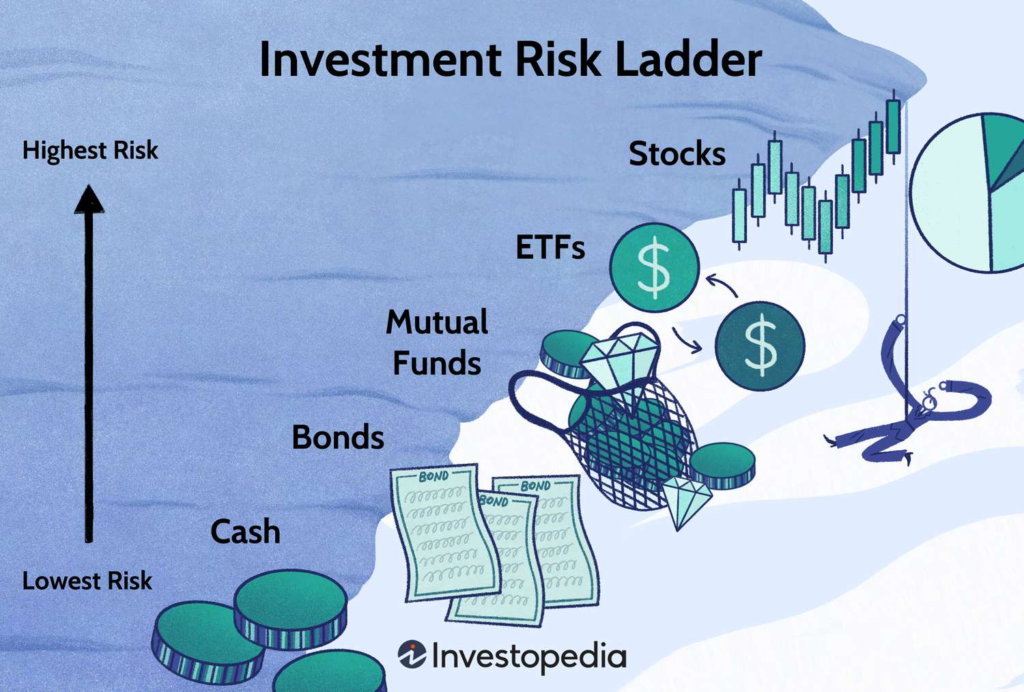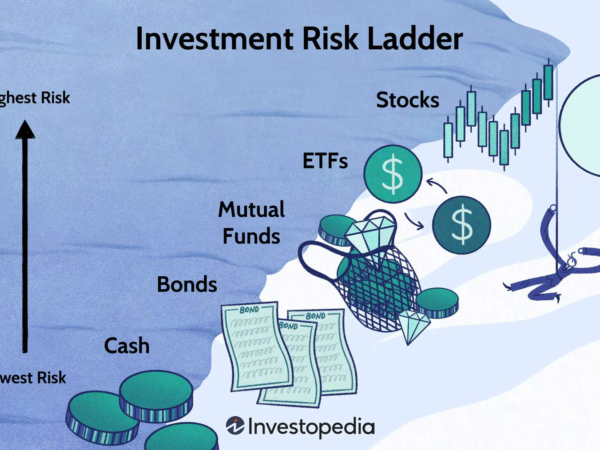Investing for the first time can be intimidating, but it doesn’t have to be. This comprehensive guide on simple investment strategies for beginners will help you navigate the financial landscape with confidence. By following straightforward methods and understanding key concepts, you can build a solid foundation for your financial future.

Investment Timeline and Expert Insights
June 2023: Financial experts such as Warren Buffett, CEO of Berkshire Hathaway, and Suze Orman, a renowned financial advisor and author, highlighted the importance of early and consistent investing. According to Buffett, “The best time to plant a tree was 20 years ago. The second-best time is now.” Orman echoed this sentiment, emphasizing that starting early with small, consistent investments can lead to significant growth over time.
July 2023: Morningstar published a comprehensive report showing the increasing popularity of index funds and ETFs among new investors. The report noted that 60% of new investors preferred these options due to their diversification and low fees. Morningstar’s lead analyst, Christine Benz, noted, “Index funds and ETFs are an excellent choice for beginners because they offer broad market exposure with minimal cost.”
August 2023: Financial advisor Dave Ramsey reinforced the necessity of establishing a solid emergency fund before investing. His advice focuses on ensuring financial stability to avoid liquidating investments prematurely. Ramsey states, “An emergency fund is crucial to avoid having to sell investments at a loss during times of financial stress.”
September 2023: Platforms like Robinhood and Fidelity introduced new tools and features designed to simplify investing for beginners. Robinhood’s Chief Product Officer, Vladimir Tenev, highlighted, “Our goal is to make investing accessible to everyone, providing the tools and education needed for informed decisions.” Similarly, Fidelity’s Kurt Schacht emphasized, “Educational resources and easy-to-use platforms help new investors get started with confidence.”
Understanding the Basics of Investing
Investing involves placing your money into assets with the expectation of earning a return. Unlike saving, which focuses on short-term goals with minimal risk, investing is about achieving long-term financial growth.
Key Components of Investing:
- Risk and Return: Investing always involves some degree of risk. Higher returns generally come with higher risk. Understanding your risk tolerance is essential for selecting the right investments.
- Diversification: This strategy involves spreading investments across various asset classes to manage risk and enhance potential returns.
- Time Horizon: Your investment strategy should align with your time frame for achieving financial goals. Longer time horizons typically allow for more aggressive investment strategies.
1. Begin with Index Funds and ETFs
Index Funds and Exchange-Traded Funds (ETFs) are ideal for beginners due to their diversification and low management costs.
- Index Funds: These funds replicate the performance of a specific market index, such as the S&P 500. They offer broad market exposure and are ideal for long-term growth. Notable options include the Vanguard 500 Index Fund (VFIAX) and the Fidelity 500 Index Fund (FXAIX). Vanguard 500 Index Fund Fidelity 500 Index Fund
- ETFs: Traded on stock exchanges, ETFs offer a flexible and diversified investment option. Popular choices include the SPDR S&P 500 ETF Trust (SPY) and the iShares Core U.S. Aggregate Bond ETF (AGG). SPDR S&P 500 ETF Trust iShares Core U.S. Aggregate Bond ETF
Both index funds and ETFs offer broad market exposure, low fees, and require minimal active management, making them suitable for beginners.
2. Explore Mutual Funds
Mutual Funds aggregate money from multiple investors to create a diversified portfolio of assets, managed by professionals.
- Actively Managed Funds: These funds are overseen by professional managers aiming to outperform the market. They typically involve higher fees but have potential for higher returns. Notable examples are the Fidelity Contrafund (FCNTX) and the T. Rowe Price Blue Chip Growth Fund (TRBCX). Fidelity Contrafund T. Rowe Price Blue Chip Growth Fund
- Passively Managed Funds: These aim to mirror the performance of an index, similar to index funds and ETFs, with lower fees. Examples include the Vanguard Total Stock Market Index Fund (VTSAX) and the Schwab U.S. Broad Market ETF (SCHB). Vanguard Total Stock Market Index Fund Schwab U.S. Broad Market ETF
Mutual funds are suitable for those who prefer professional management and a diversified portfolio without active involvement.
3. Consider Dollar-Cost Averaging
Dollar-Cost Averaging (DCA) involves investing a fixed amount of money at regular intervals, regardless of market conditions. This method reduces the impact of volatility and lowers the average cost of your investments over time.
For instance, if you invest $100 each month into a fund, you’ll buy more shares when prices are low and fewer shares when prices are high. This approach helps smooth out market fluctuations and reduces the risk of investing a large amount at an inopportune time.
4. Invest in High-Interest Savings Accounts
For a low-risk investment, consider High-Interest Savings Accounts (HISAs). These accounts provide a safe place to grow your money with minimal risk.
Look for accounts with competitive interest rates and low fees. Notable options include the Ally Bank Online Savings Account and the Marcus by Goldman Sachs High Yield Online Savings Account. Ally Bank Online Savings Account Marcus by Goldman Sachs
While HISAs may not offer high returns, they provide liquidity and stability, making them suitable for short-term savings and emergency funds.
5. Explore Retirement Accounts
Retirement Accounts such as 401(k)s and IRAs offer tax advantages and are crucial for long-term financial planning.
- 401(k): Offered by employers, 401(k) plans often include matching contributions, which can significantly boost your retirement savings. Contributions are made with pre-tax dollars, reducing your taxable income. For 2024, the contribution limit is $23,000, with an additional $7,500 for those aged 50 and over. IRS Retirement Plan Limits
- IRA: Individual Retirement Accounts allow for tax-advantaged growth. You can choose between a traditional IRA, which offers tax-deferred growth, or a Roth IRA, which provides tax-free withdrawals in retirement. For 2024, the contribution limit is $6,500, with an additional $1,000 for those aged 50 and over. Roth IRA Contribution Limits
Both types of accounts help in building a secure retirement fund with substantial tax benefits.
6. Start with Robo-Advisors
Robo-Advisors use algorithms to manage investments based on your goals and risk tolerance. They offer a cost-effective and user-friendly solution for beginners.
Popular robo-advisors include Betterment and Wealthfront. These platforms provide automated portfolio management and investment recommendations tailored to your financial situation and objectives. Betterment Wealthfront
Robo-advisors are ideal for those seeking a hands-off approach with minimal fees and robust investment management.
7. Educate Yourself Continuously
Continuous education is vital in investing. Stay updated with market trends and investment options through:
- Books: “The Intelligent Investor” by Benjamin Graham and “Rich Dad Poor Dad” by Robert Kiyosaki offer foundational knowledge on investing.
- Online Courses: Platforms like Coursera and Khan Academy provide free courses on investing basics.
- Financial News: Stay informed with reputable sources such as The Wall Street Journal and Bloomberg.
8. Explore ESG Funds
Environmental, Social, and Governance (ESG) Funds reflect growing investor interest in ethical and environmentally responsible investments. These funds focus on companies meeting specific sustainability criteria. Notable ESG funds include the iShares ESG Aware MSCI USA ETF and the Vanguard FTSE Social Index Fund. iShares ESG Aware MSCI USA ETF Vanguard FTSE Social Index Fund
Conclusion
Investing doesn’t have to be daunting. By starting with simple investment strategies for beginners, such as index funds, ETFs, and retirement accounts, you can build a solid foundation for your financial future. Remember to start early, diversify your investments, and continuously educate yourself to make informed decisions.
Experts like Warren Buffett and Suze Orman emphasize the importance of early investment and financial education. Combining their advice with the latest investment tools and strategies will help you achieve your financial goals.
Sources and Further Reading
For Regular Finance Updates Follow – Daily Business
FAQs
Q1: What are the best investment strategies for beginners?
A1: The best investment strategies for beginners include starting with index funds and ETFs for diversification, using dollar-cost averaging to manage risk, and exploring retirement accounts for long-term growth.
Q2: How can beginners start investing with a small budget?
A2: Beginners can start investing with a small budget by using low-cost index funds or ETFs, setting up automatic contributions, and considering robo-advisors that offer low minimum investment amounts.
Q3: What are the advantages of using robo-advisors?
A3: Robo-advisors offer automated investment management with low fees, personalized portfolio recommendations, and accessibility for beginners with minimal investment knowledge.
Q4: How important is diversification in investing?
A4: Diversification is crucial as it helps spread risk across various asset classes, reducing the impact of any single investment’s poor performance on your overall portfolio.
Q5: What is the role of an emergency fund in investing?
A5: An emergency fund provides financial stability by covering unexpected expenses without needing to sell investments at a loss, ensuring you can stay invested for the long term.
